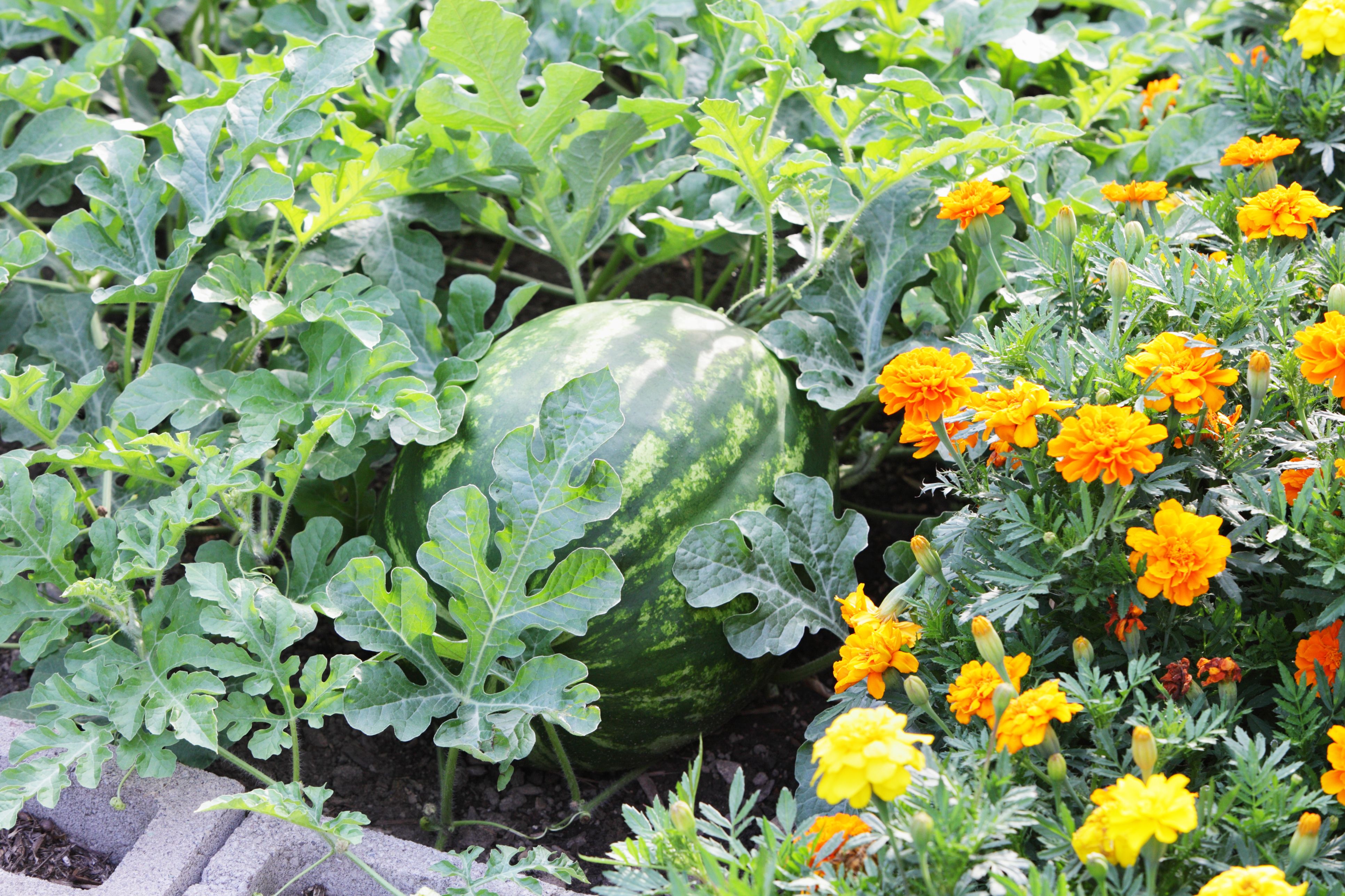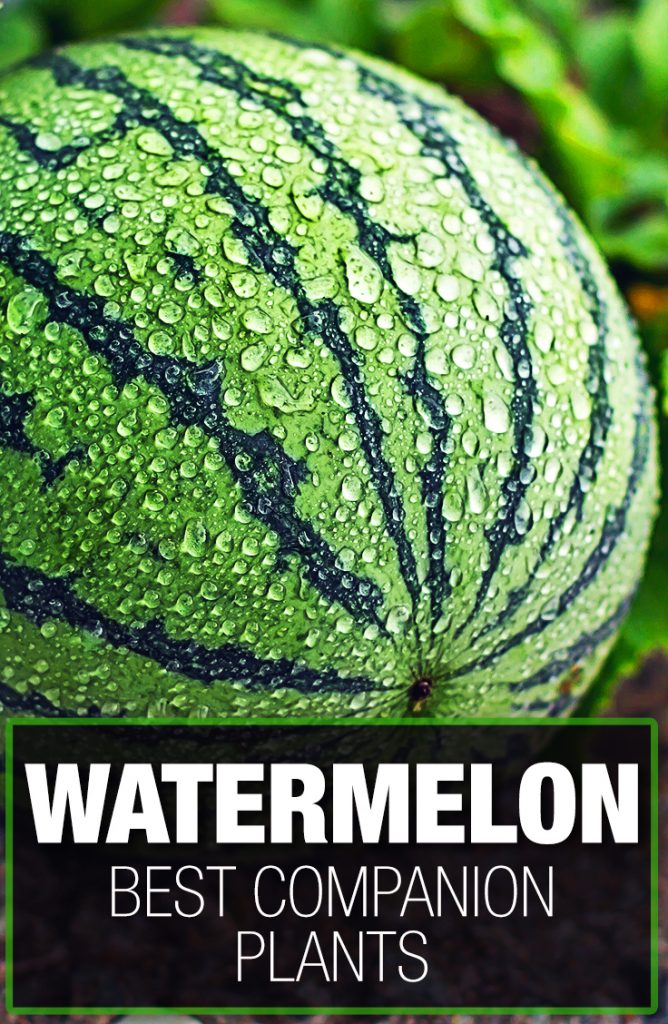Watermelon Companion Plants That Will Help You Grow Juicy Melons
Watermelons are a delicious and refreshing summer treat, but they can be tricky to grow. One way to improve your chances of success is to plant companion plants. Companion planting is the practice of planting different types of plants together that benefit each other. There are a number of companion plants that can help watermelons grow better, including:
- Beans and peas: These nitrogen-fixing plants can help to improve the soil quality for watermelons.
- Cilantro: Cilantro repels pests such as aphids and whiteflies, which can damage watermelon plants.
- Corn: Corn provides shade for watermelon vines, which can help to protect them from pests and diseases.
- Dill: Dill attracts pollinators, which are essential for watermelon pollination.
- Garlic: Garlic has strong insect-repelling properties that can help to keep pests away from watermelon plants.
- Lettuce: Lettuce is a low-growing plant that will not shade watermelon vines. It also helps to suppress weeds.
- Marigolds: Marigolds are another insect-repelling plant that can help to protect watermelons from pests.
- Nasturtiums: Nasturtiums attract pests such as aphids and beetles, which can then be eaten by beneficial insects. They also help to improve the soil quality.
- Radishes: Radishes are a fast-growing crop that can be planted in between watermelon vines. They help to break up the soil and improve drainage.
In addition to these companion plants, there are a few plants that you should avoid planting near watermelons. These include:
- Cucumbers: Cucumbers and watermelons are both susceptible to the same pests and diseases, so planting them together can increase the risk of infection.
- Potatoes: Potatoes and watermelons compete for the same nutrients in the soil, so planting them together can stunt the growth of both plants.
- Squash: Squash and watermelons are both members of the cucurbit family, and they can cross-pollinate with each other. This can produce watermelons that are misshapen or have poor flavor.
By planting the right companion plants, you can help to improve your chances of growing delicious, juicy watermelons. So next time you're planning your garden, be sure to add some of these beneficial plants to the mix.
FAQ of watermelon companion plants
- What are good companion plants for watermelon?
Watermelons are heavy feeders and need a lot of space to grow. Some good companion plants for watermelon include:
* Sunflowers: Sunflowers attract pollinators, which help to pollinate the watermelon flowers.
* Cucumbers: Cucumbers and watermelon have similar growing requirements and can help to suppress weeds.
* Pole beans: Pole beans provide shade for the watermelon plants and help to improve the soil quality.
* Marigolds: Marigolds help to repel pests, such as cucumber beetles and squash bugs.
* Herbs: Herbs, such as mint, oregano, and thyme, can help to deter pests and attract pollinators.
- What are bad companion plants for watermelon?
Some bad companion plants for watermelon include:
* Peas: Peas compete with watermelon for nitrogen, a nutrient that watermelons need in large amounts.
* Potatoes: Potatoes and watermelons are susceptible to the same diseases, so planting them close together can increase the risk of disease transmission.
* Pumpkins: Pumpkins and watermelons are both large plants that need a lot of space to grow. Planting them close together can crowd them and stunt their growth.
* Spinach: Spinach can attract pests, such as aphids, which can also harm watermelon plants.
* Tomatoes: Tomatoes and watermelons are both susceptible to the same diseases, so planting them close together can increase the risk of disease transmission.
- How far apart should watermelon plants be planted?
Watermelon plants should be planted about 3 feet apart. This gives them enough space to grow and spread out their roots.
- How much water do watermelon plants need?
Watermelon plants need about 1 inch of water per week. However, they may need more water during hot, dry weather. It is important to water the plants deeply, so that the water reaches the roots.
- How do you manage watermelon pests and diseases?
There are a few things you can do to manage watermelon pests and diseases:
* Plant resistant varieties of watermelon.
* Practice good garden sanitation, such as removing weeds and debris.
* Inspect your plants regularly for signs of pests or diseases.
* Use insecticidal soap or neem oil to control pests.
* Treat diseases with fungicides, as directed on the label.
Image of watermelon companion plants
- Sunflowers: Sunflowers attract pollinators, which help to pollinate watermelons. They also help to shade the watermelon plants, which can help to protect them from pests and diseases.
- Nasturtiums: Nasturtiums deter pests such as cucumber beetles and squash bugs, which can damage watermelon plants. They also attract pollinators.

- Lettuce: Lettuce does not compete with watermelon plants for water or nutrients. It can also help to suppress weeds.

- Marigolds: Marigolds deter nematodes, which are microscopic worms that can damage watermelon plants. They also attract pollinators.

- Radishes: Radishes mature quickly and can be harvested before they compete with watermelon plants for space and nutrients. They also help to suppress weeds.

Post a Comment for " Watermelon Companion Plants That Will Help You Grow Juicy Melons"